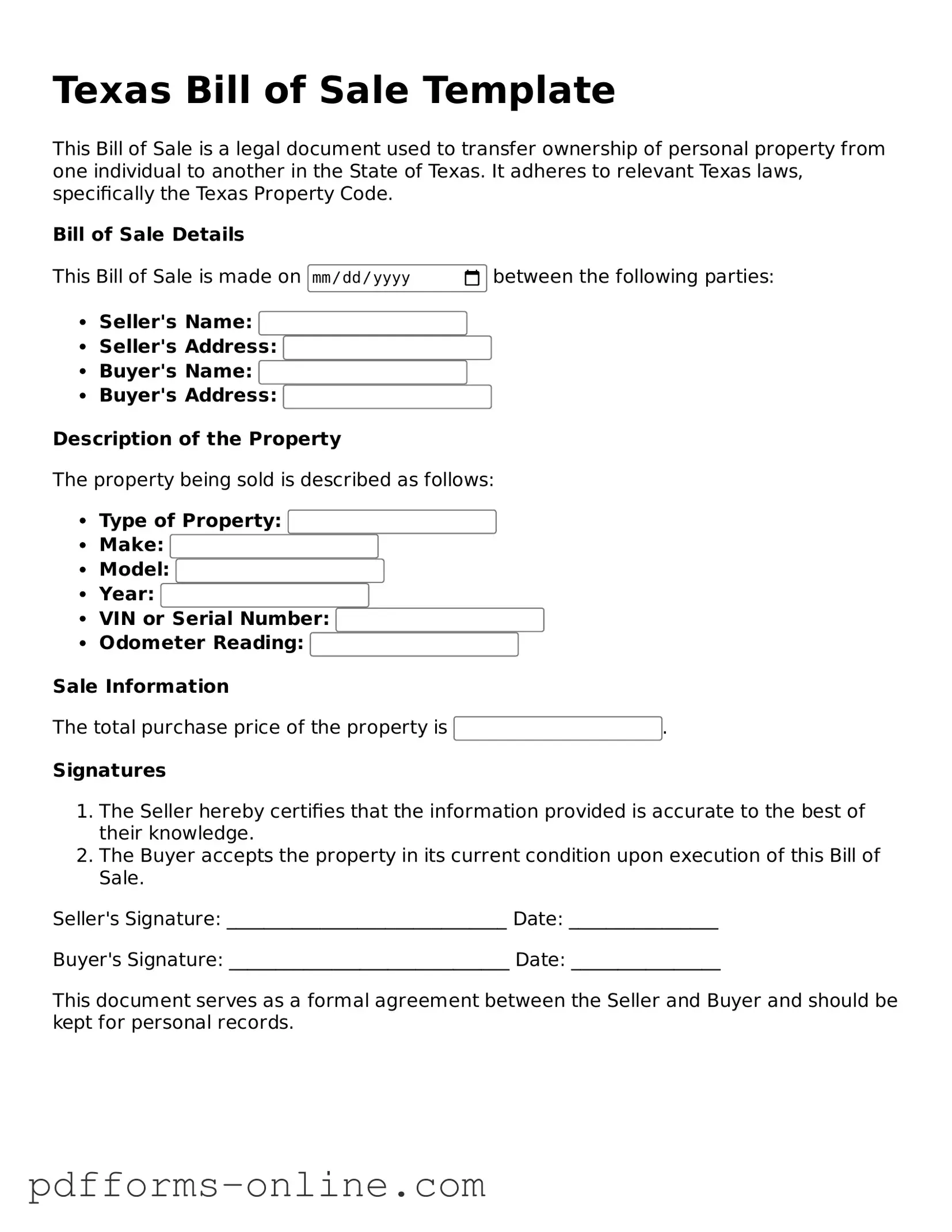The Texas Bill of Sale is similar to a Vehicle Title Transfer document. Both documents serve to transfer ownership of a vehicle from one party to another. The Vehicle Title Transfer includes details about the vehicle, such as its identification number, make, and model. It also requires signatures from both the seller and buyer, ensuring that the transaction is legally recognized. This document is crucial for registering the vehicle in the new owner’s name.
Another document that resembles the Texas Bill of Sale is the Purchase Agreement. This agreement outlines the terms of a sale between a buyer and a seller. It specifies the items being sold, the price, and the payment terms. Like the Bill of Sale, it requires signatures from both parties to confirm their agreement. This document is often used for more complex transactions involving multiple items or services.
The Rental Agreement is also similar to the Texas Bill of Sale. While it pertains to the rental of property rather than a sale, it serves to establish a legal relationship between the landlord and tenant. It details the terms of the rental, including duration, payment, and responsibilities of both parties. Like the Bill of Sale, it requires signatures to make it binding.
The Warranty Deed is another document that shares similarities with the Texas Bill of Sale. This deed is used to transfer ownership of real estate. It provides a guarantee that the seller has the right to sell the property and that the title is clear. Both documents require specific details about the property and the parties involved, ensuring a smooth transfer of ownership.
The Promissory Note is akin to the Texas Bill of Sale in that it involves a financial transaction. This document outlines a borrower’s promise to repay a loan to the lender. It includes details such as the loan amount, interest rate, and repayment schedule. Both documents require the signatures of the involved parties to validate the agreement.
The Power of Attorney document is similar in that it allows one person to act on behalf of another. This can include signing a Bill of Sale for someone who cannot be present. The Power of Attorney must be executed properly to ensure that the authority granted is legally recognized. Both documents require clear identification of the parties involved and their intentions.
The Affidavit of Ownership is another document that shares characteristics with the Texas Bill of Sale. This affidavit is often used to declare ownership of personal property when a Bill of Sale is not available. It provides a sworn statement of ownership and can be used in legal matters to prove that someone has the right to sell or transfer the property.
Lastly, the Release of Liability form is similar to the Texas Bill of Sale in that it protects one party from future claims. When a Bill of Sale is executed, the seller typically releases any liability associated with the item sold. The Release of Liability formally documents this transfer of responsibility, ensuring that the buyer cannot hold the seller accountable for issues arising after the sale.
